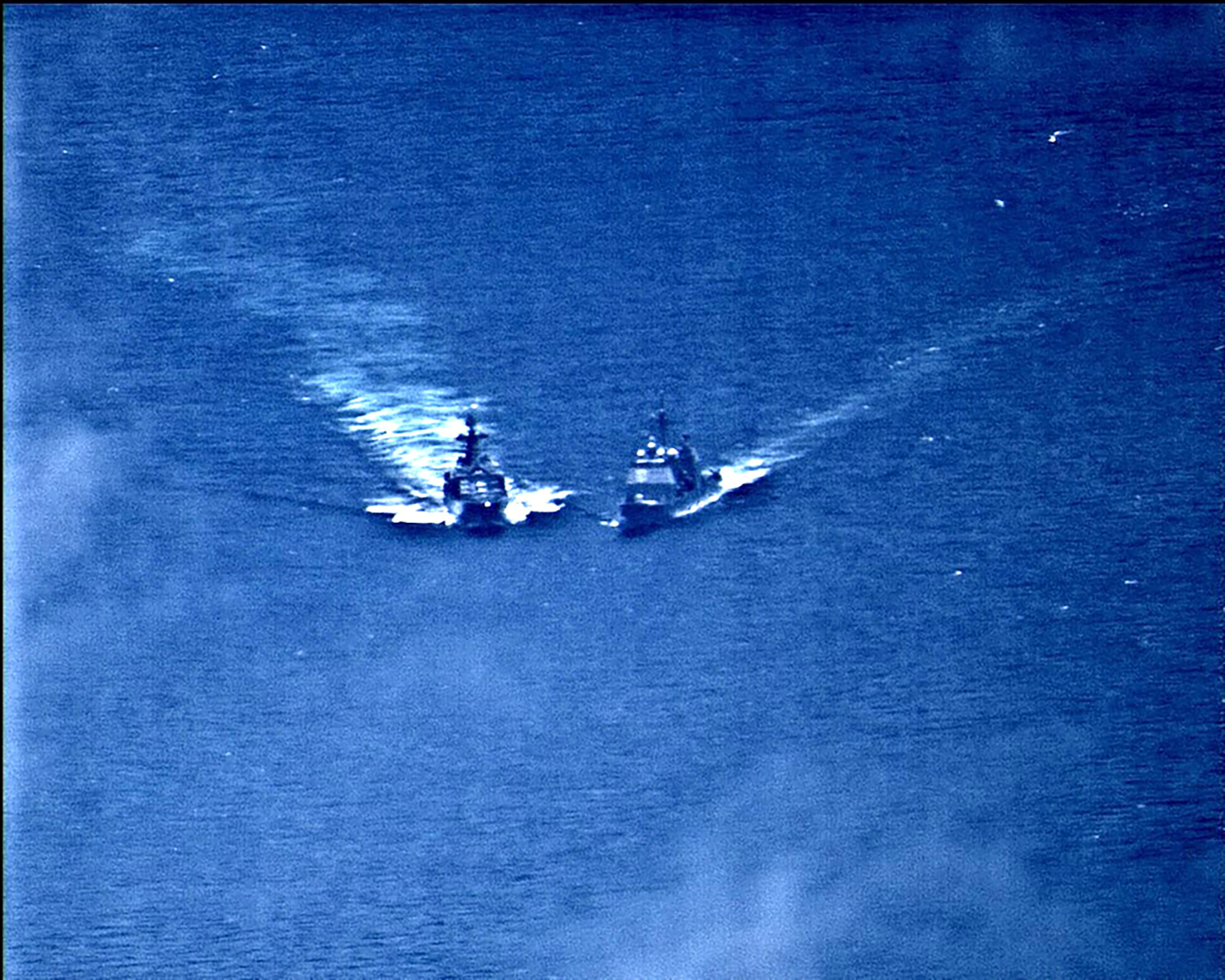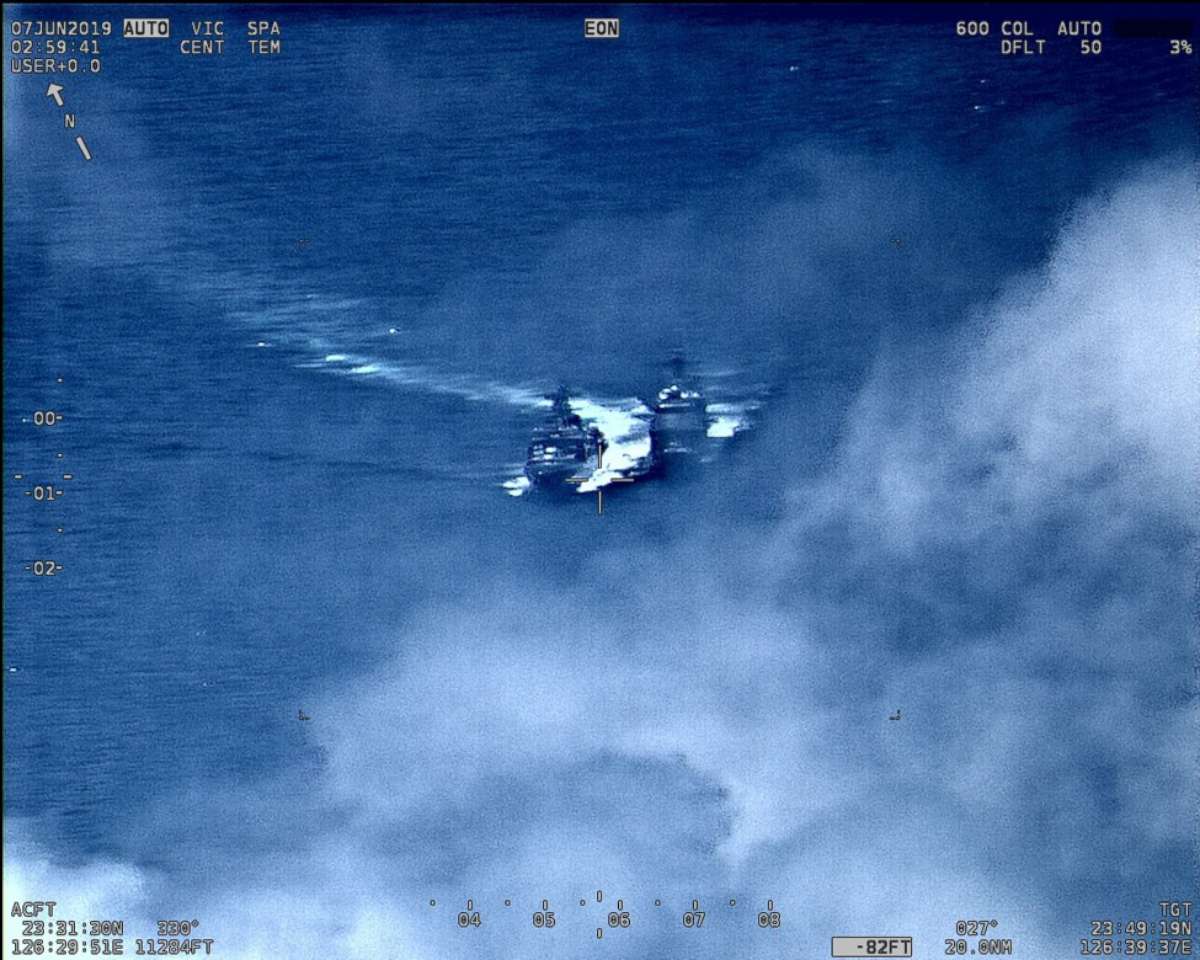Russian destroyer gets close to US Navy ship in Philippine Sea, forces move to 'avoid collision'
The U.S. ship had to execute emergency maneuvers to avoid a collision.
A U.S. Navy guided-missile cruiser was forced to execute emergency maneuvers on Friday after a Russian destroyer came within several yards of the American ship, the U.S. Navy's Seventh Fleet said.
The USS Chancellorsville was operating in the Philippine Sea at approximately 11:45 a.m. on Friday when the Russian ship DD572 "maneuvered from behind and to the right of the Chancellorsville, accelerated, and closed to an unsafe distance" of between 50 and 100 feet, Seventh Fleet said in a statement.
The behavior is unsafe and unprofessional.
"This unsafe action forced Chancellorsville to execute all engines back full and to maneuver to avoid collision," the statement continued.
Russia's Pacific Fleet argued it was the American ship that changed course without warning, forcing the Russian ship to execute an emergency maneuver to avoid collision. The Russian statement also said that the ship, the Admiral Vinogradov, broadcast a protest on an international frequency to the U.S. ship, telling it that its actions were unacceptable.
Reacting to the incident on Friday, Acting Defense Secretary Patrick Shanahan told reporters his initial reaction was a concern for the safety of the men and women on the ship.
"The behavior is unsafe and unprofessional," Shanahan said. "We'll have military to military conversations with the Russians. And of course we'll démarche them. But you know it's -- to me, safety at the end of the day is most important. It will not deter us from conducting our operations."


The Chancellorsville had just finished a replenishment at sea with the USNS John Ericsson when the Russian destroyer crossed in front of the bows of both ships at a distance of 1,000 yards, according to a narrative provided to ABC News by a U.S. official. Then, the Russian vessel came in from a position behind and to the right of the U.S. ship, turning into the Chancellorsville and accelerating at a close distance.
The Chancellorsville was steering on a course to recover a helicopter, flying specific flags to indicate its intent, the official said. While that was occurring, the Russian ship steered a course into the Chancellorsville and closed within 50 and 100 feet.
The maneuver caused the Chancellorsville crew to wave off the helicopter and execute a "back full" so as to avoid a collision, as the Russian ship passed.
Aerial images taken from a U.S. Navy P-8 reconnaissance aircraft show the distance between the two ships. Near the end of video taken of Friday's incident, Russian sailors appear to be dressed in bathing suits sunning on ship's helicopter deck.
The incident follows another interaction -- this time between U.S. and Russian aircraft -- that the U.S. Navy deemed "unsafe." Earlier this week, a U.S. P-8A Poseidon reconnaissance aircraft experienced an "unsafe" and "irresponsible" intercept by a Russian fighter over international waters above the Mediterranean Sea.
In late May, U.S. Air Force F-22 fighters intercepted Russian aircraft that had entered the Alaska Air Defense Identification Zone (ADIZ) for the second day in a row.
The last time a U.S. Navy ship experienced this close of an encounter with another nation's vessel was in October when a Chinese warship sailed 135 feet from the bow of the U.S. Navy destroyer USS Decatur.
ABC News' Patrick Reevell contributed to this report from Moscow.




